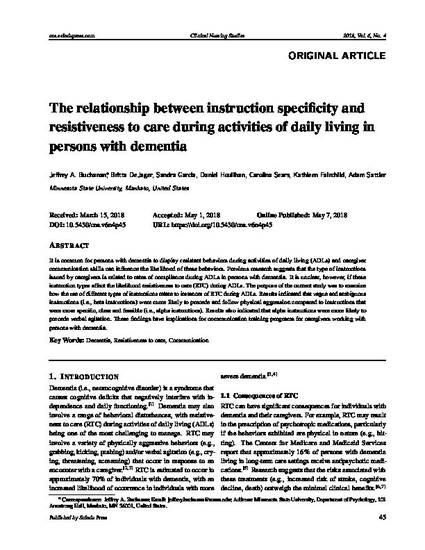
It is common for persons with dementia to display resistant behaviors during activities of daily living (ADLs) and caregiver communication skills can influence the likelihood of these behaviors. Previous research suggests that the type of instructions issued by caregivers is related to rates of compliance during ADLs in persons with dementia. It is unclear, however, if these instruction types affect the likelihood resistiveness to care (RTC) during ADLs. The purpose of the current study was to examine how the use of different types of instructions relate to instances of RTC during ADLs. Results indicated that vague and ambiguous instructions (i.e., beta instructions) were more likely to precede and follow physical aggression compared to instructions that were more specific, clear and feasible (i.e., alpha instructions). Results also indicated that alpha instructions were more likely to precede verbal agitation. These findings have implications for communication training programs for caregivers working with persons with dementia.
Copyrights for articles published in our journals are retained by the authors, with first publication rights granted to the journal.
Buchanan, J.A., DeJager, B., Garcia, S., Houlihan, D., Sears, C., Fairchild, K., & Sattler, A. (2018). The relationship between instruction specificity and resistiveness to care during activities of daily living in persons with dementia. Clinical Nursing Studies, 6(4), 45-52. doi:10.5430/cns.v6n4p45
